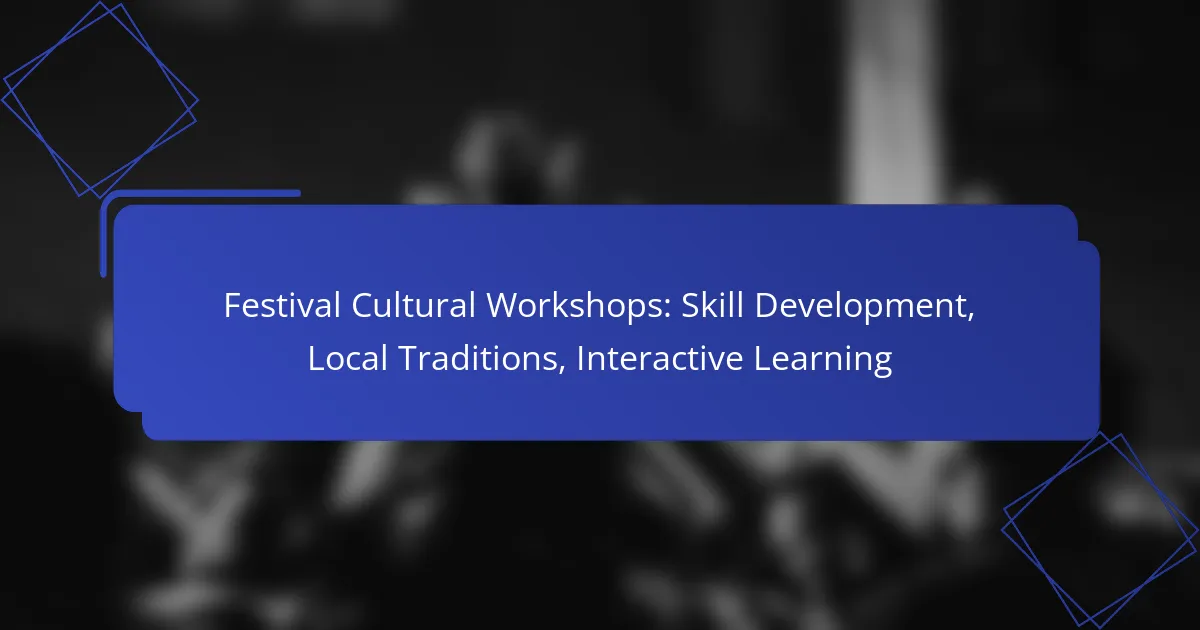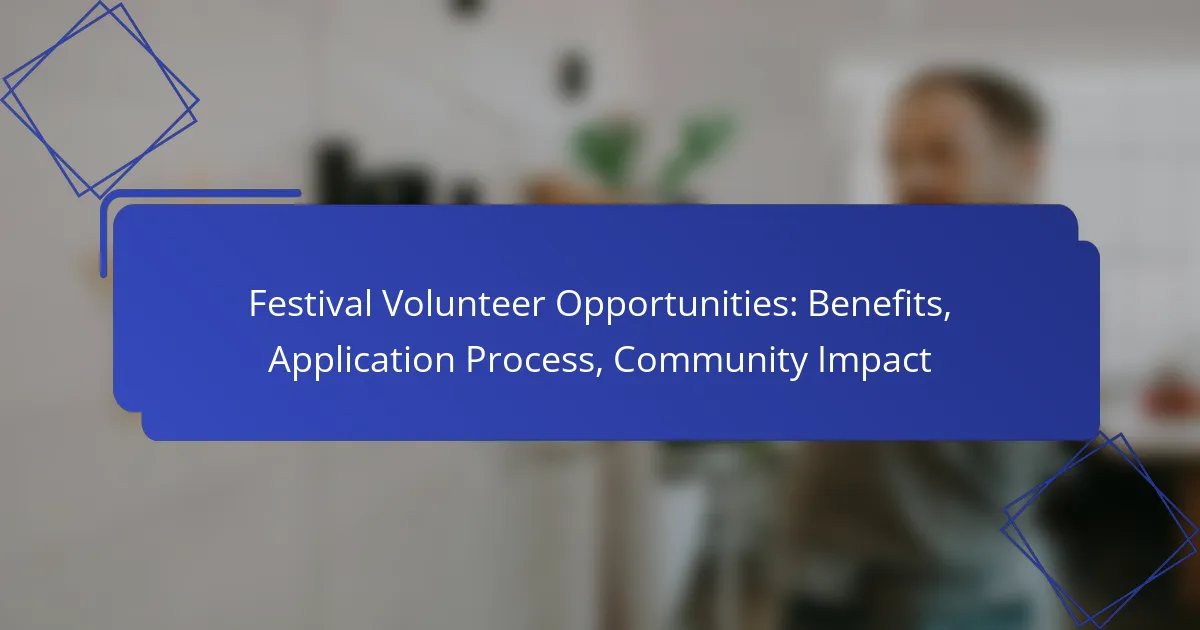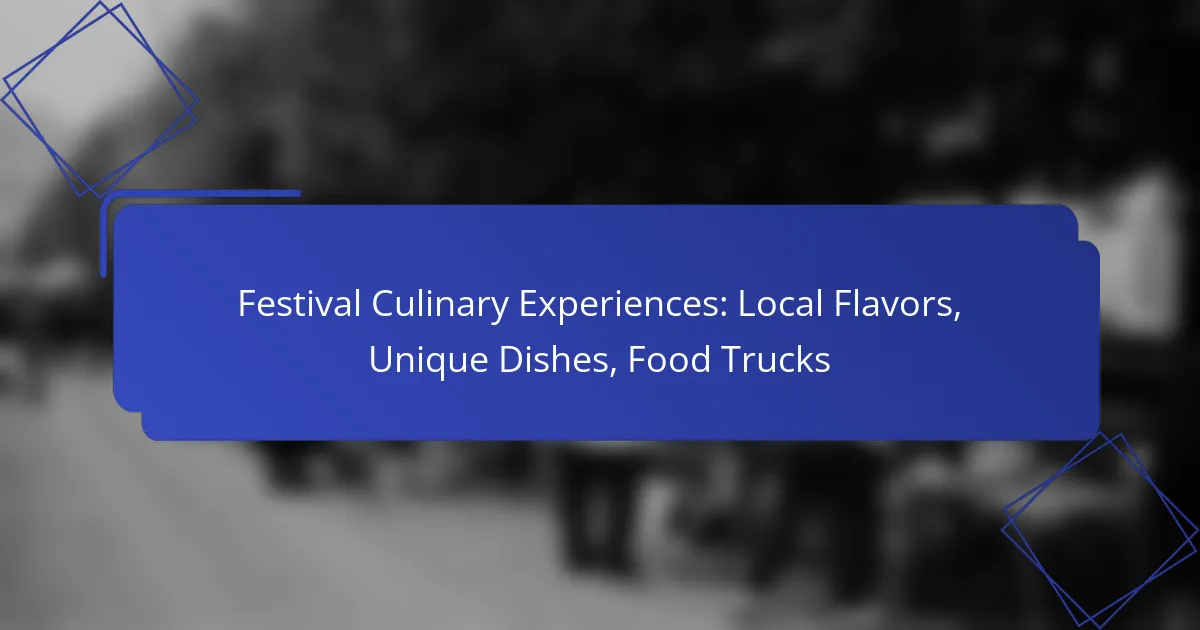When choosing a music festival, it’s essential to consider the genres represented, as popular options like rock, EDM, hip-hop, country, and indie each create unique atmospheres and attract different audiences. The festival’s vibe, whether intimate or large-scale, significantly impacts your experience, so think about what setting resonates with you. Additionally, the lineup, featuring a mix of headliners, emerging artists, and local talent, plays a vital role in shaping the overall appeal and memorability of the event.

Which music genres are popular at festivals in the US?
In the US, popular music genres at festivals include rock, electronic dance music (EDM), hip-hop, country, and indie. Each genre attracts distinct audiences and offers unique atmospheres, making them appealing for various festival experiences.
Rock
Rock music remains a staple at US festivals, often featuring both classic and contemporary bands. Major festivals like Coachella and Lollapalooza showcase a mix of rock subgenres, from alternative to punk, appealing to a wide range of fans.
When attending a rock festival, consider the lineup’s diversity and the festival’s history. Look for events that highlight both established acts and emerging artists to enhance your experience.
Electronic Dance Music (EDM)
EDM has surged in popularity at festivals, with events like Electric Daisy Carnival and Ultra Music Festival drawing massive crowds. The genre is characterized by high-energy performances, elaborate light shows, and immersive experiences.
For those new to EDM festivals, familiarize yourself with the different subgenres, such as house, techno, and dubstep. Each offers a unique vibe, so choose festivals that align with your musical preferences for the best experience.
Hip-Hop
Hip-hop festivals have gained traction, featuring a blend of mainstream and underground artists. Events like Rolling Loud and Made in America highlight the genre’s cultural impact and its diverse range of styles.
When selecting a hip-hop festival, pay attention to the lineup and the overall atmosphere. Look for festivals that promote inclusivity and celebrate the genre’s roots to fully appreciate the experience.
Country
Country music festivals, such as Stagecoach and CMA Fest, celebrate the genre’s rich storytelling tradition and community spirit. These events often feature a mix of established stars and up-and-coming artists, creating a welcoming environment for fans.
To enjoy a country festival, consider the location and the festival’s theme. Many events incorporate local culture and cuisine, enhancing the overall experience beyond just the music.
Indie
Indie music festivals have become increasingly popular, showcasing a variety of independent artists across genres. Events like Pitchfork Music Festival and Bonnaroo emphasize creativity and innovation, attracting a dedicated fan base.
When attending an indie festival, explore the lineup ahead of time to discover new artists. These festivals often provide a more intimate setting, allowing for deeper connections with the music and fellow attendees.

How to choose the right festival atmosphere?
Selecting the right festival atmosphere is crucial for enhancing your overall experience. Consider whether you prefer a cozy, intimate setting or a vibrant, large-scale event, as each offers distinct vibes and interactions.
Intimate settings
Intimate festival settings typically feature smaller crowds and close interactions with artists. These environments foster a sense of community, allowing attendees to connect more personally with performers and fellow festival-goers.
When choosing an intimate festival, look for venues like local parks, small theaters, or boutique spaces. Examples include folk festivals or acoustic music events, where the atmosphere is relaxed and engaging.
Large-scale events
Large-scale festivals attract thousands of attendees and often feature multiple stages with a diverse lineup. These events create an electrifying atmosphere filled with energy and excitement, ideal for those who enjoy a bustling environment.
Consider popular music festivals like Coachella or Glastonbury, which offer a wide variety of genres and experiences. However, be prepared for longer wait times and larger crowds, which can impact your comfort and accessibility.
Family-friendly environments
Family-friendly festivals cater to all ages, providing activities and entertainment suitable for children and adults alike. These events often include workshops, games, and kid-friendly performances, ensuring a wholesome experience for families.
Look for festivals that explicitly promote family-oriented activities, such as community fairs or cultural festivals. These events typically have designated areas for children and offer a safe environment for families to enjoy together.
Party-centric vibes
Party-centric festivals focus on creating a lively atmosphere filled with dancing and socializing. These events often feature DJs, dance music, and immersive experiences that encourage attendees to let loose and enjoy the moment.
Examples include electronic dance music festivals like Tomorrowland or Ultra Music Festival, where the emphasis is on high-energy performances and vibrant nightlife. If you’re seeking a thrilling experience, these festivals are designed to keep the party going.

What factors influence festival lineup selection?
Festival lineup selection is influenced by various factors including headliner popularity, genre diversity, emerging artists, and local talent. Each of these elements plays a crucial role in attracting attendees and creating a memorable experience.
Headliner popularity
Headliner popularity is often the primary factor in festival lineup selection. Well-known artists can draw large crowds, making them essential for ticket sales. Festivals typically prioritize securing big names that resonate with their target audience.
When selecting headliners, promoters consider current chart performance, social media presence, and recent tour success. Balancing established stars with rising acts can enhance the overall appeal of the lineup.
Genre diversity
Genre diversity is vital for creating an inclusive atmosphere that appeals to a wider audience. Festivals often curate a mix of genres, such as rock, electronic, hip-hop, and indie, to cater to different musical tastes.
Including various genres can also encourage cross-genre collaborations and unique performances. This diversity helps to create a vibrant festival culture that attracts attendees from various backgrounds.
Emerging artists
Incorporating emerging artists into the lineup is essential for showcasing new talent and keeping the festival fresh. Festivals often allocate slots for up-and-coming musicians, providing them with valuable exposure and opportunities.
Promoters look for artists with a growing fan base and potential for future success. This not only enriches the festival experience but also fosters a sense of community and support for new talent.
Local talent
Featuring local talent is a key aspect of festival lineup selection, as it helps to strengthen community ties and promote regional music scenes. Local artists can draw in hometown crowds and create a sense of pride among attendees.
Festivals often collaborate with local music organizations to identify promising acts. This approach not only supports the local economy but also enhances the festival’s authenticity and connection to its location.

How do festival locations impact genre selection?
Festival locations significantly influence the selection of music genres, as they cater to the preferences and cultural backgrounds of the local audience. Urban areas often embrace diverse genres, while rural settings may focus on more traditional or regional styles.
Urban festivals
Urban festivals typically feature a wide variety of music genres, including pop, electronic, hip-hop, and rock. The diverse population in cities allows for a blend of cultural influences, attracting both local and international artists. For example, festivals in cities like Berlin or New York often showcase cutting-edge genres and experimental acts, appealing to a broad audience.
When planning an urban festival, consider the demographics of the area. A younger crowd may prefer electronic dance music, while a more mature audience might lean towards classic rock or jazz. Tailoring the lineup to these preferences can enhance attendance and engagement.
Rural festivals
Rural festivals often focus on specific genres that resonate with local traditions, such as folk, country, or bluegrass. These events celebrate regional culture and often feature local artists, creating a sense of community. For instance, a country music festival in the American South will likely draw crowds interested in that genre’s storytelling and roots.
When organizing a rural festival, it’s essential to connect with the local community and understand their musical tastes. Engaging local musicians and incorporating regional themes can foster a stronger bond with attendees and encourage repeat visits.
Regional music preferences
Regional music preferences play a crucial role in festival genre selection, as different areas have distinct musical heritages. For example, festivals in the Caribbean may highlight reggae and calypso, while those in the Midwest USA might focus on country and Americana. Understanding these preferences can guide the festival’s lineup and marketing strategy.
To effectively cater to regional tastes, conduct surveys or engage with local music communities before finalizing the lineup. This approach not only ensures a relevant selection of genres but also encourages local participation and support, enhancing the overall festival experience.

What are the best festivals for specific music genres?
Choosing the best festivals for specific music genres depends on the atmosphere, lineup, and overall experience. Festivals like Coachella and Tomorrowland stand out for their unique offerings tailored to indie and EDM fans, respectively.
Coachella for Indie
Coachella is renowned for its diverse lineup that often features a strong selection of indie artists. Set in California’s Coachella Valley, this festival attracts music lovers with its vibrant atmosphere, art installations, and fashion-forward attendees.
When attending Coachella, consider the daily schedule to catch your favorite indie acts, as performances can overlap. Arriving early can help you secure a good spot near the stages, enhancing your experience.
Tomorrowland for EDM
Tomorrowland is a premier festival for electronic dance music (EDM) enthusiasts, held annually in Belgium. Known for its elaborate stage designs and immersive experiences, it showcases top DJs and emerging talents in the EDM scene.
To make the most of Tomorrowland, plan your accommodations early, as nearby options fill up quickly. Familiarize yourself with the festival layout to navigate between stages efficiently, ensuring you don’t miss your favorite performances.



